Abstract
STUDY OBJECTIVE--The aim was to estimate the likely burden of cervical cancer in New Zealand over the next two decades, according to whether cervical screening services are made more effective. DESIGN--The study was based on national mortality and incidence data for the periods 1954-87 and 1954-86, respectively. An age-period-cohort model was used to estimate the contributions of age, time period, and birth cohort effects to the occurrence of cervical cancer. Using age specific estimates of the future female population of New Zealand, projections of cervical cancer mortality and incidence until the year 2008 were derived from the model. Projections were made assuming either that screening services will not be improved, or that an immediate improvement in the organisation of screening will lead to a decline in period effects for incidence of 15% per five year time period (with a slightly delayed effect on mortality). It was also assumed either that the risk in new birth cohorts will be similar to that in recent cohorts, or that their risk will be halved as a result of changes in sexual behaviour (due to education about AIDS or other factors). Combining these assumptions produced four sets of estimates, reflecting a range of possible scenarios. SETTING--Both the data used and the projections obtained related to the entire population of New Zealand women. MAIN RESULTS--For both mortality and incidence, projections were made of age specific rates, cumulative rates, and absolute numbers of deaths or new cases. With the first assumption about new birth cohorts, it was estimated that both mortality and incidence rates will increase if screening services are are not improved. In absolute terms, the present 100 deaths per year could increase to about 148 deaths per year, while there could be a much larger increase in incidence from 235 per year to about 440 per year). With improved screening, there could be a reduction in age specific mortality rates and a modest decline in the number of deaths, while a reduction in incidence rates would be accompanied by about the same number of new cases as at present. In comparison with improvements in screening, changes in the underlying risk in new birth cohorts would have much smaller effects on the occurrence of cervical cancer over the next two decades. CONCLUSIONS--Plausible improvements in cervical screening are likely to be accompanied by only small changes in the burden of cervical cancer over the next two decades. If screening services are not improved, however, there will be striking increases in both mortality and incidence.
Full text
PDF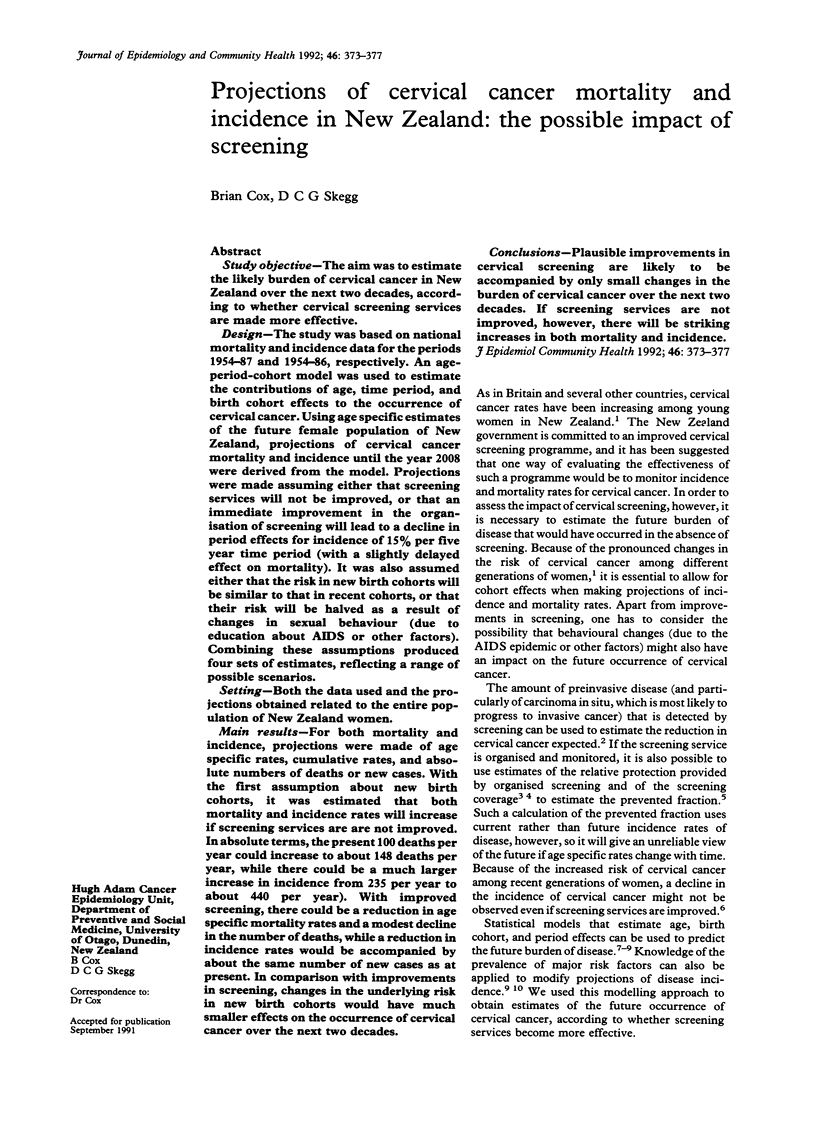
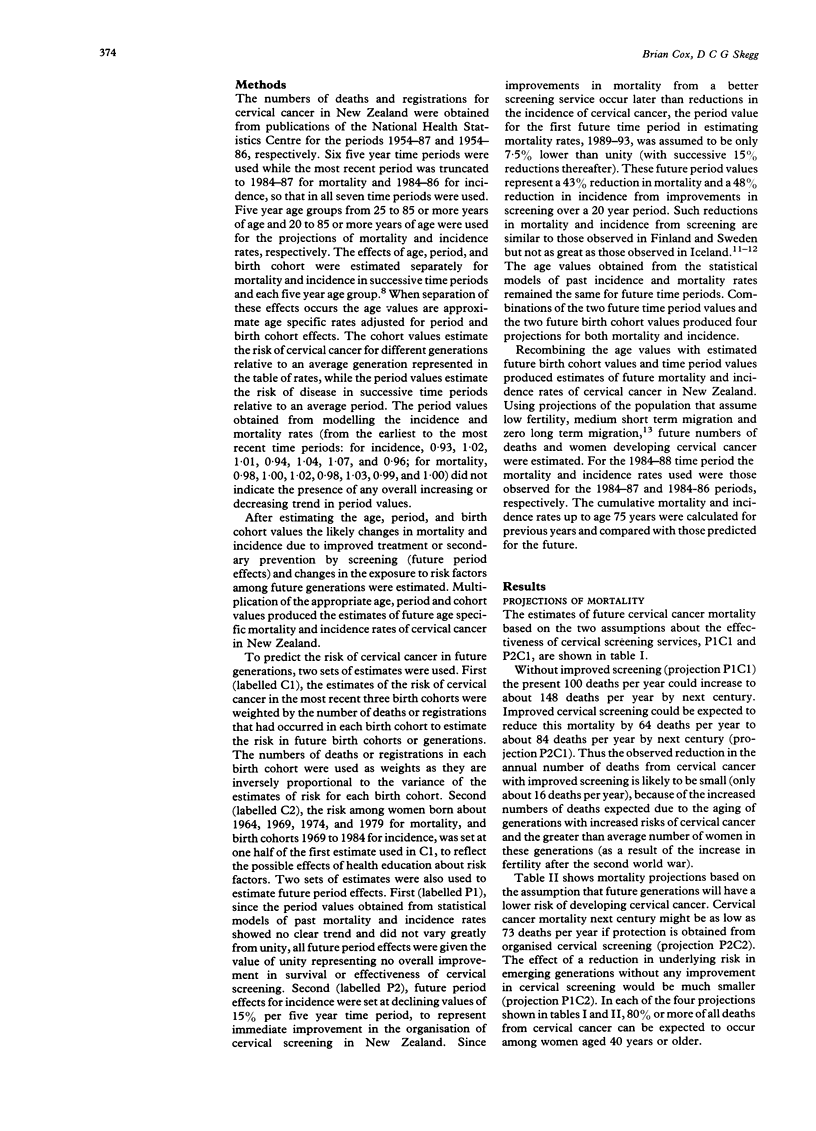
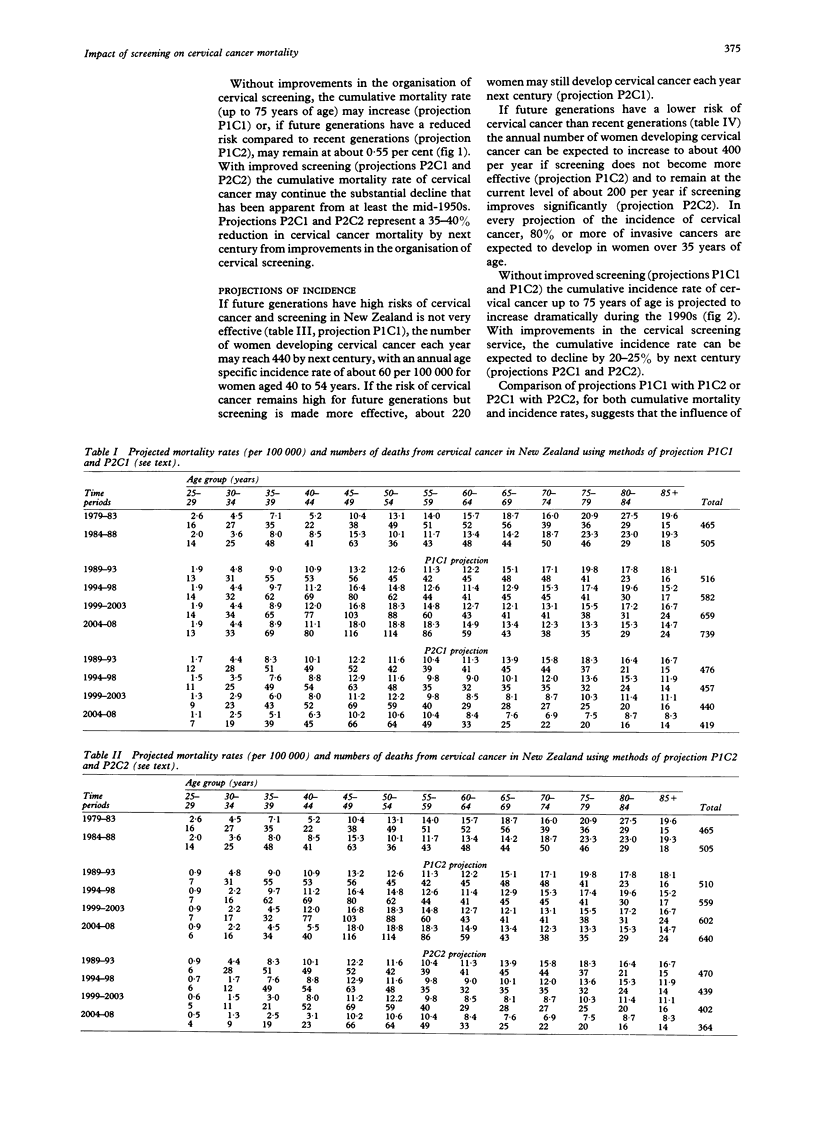
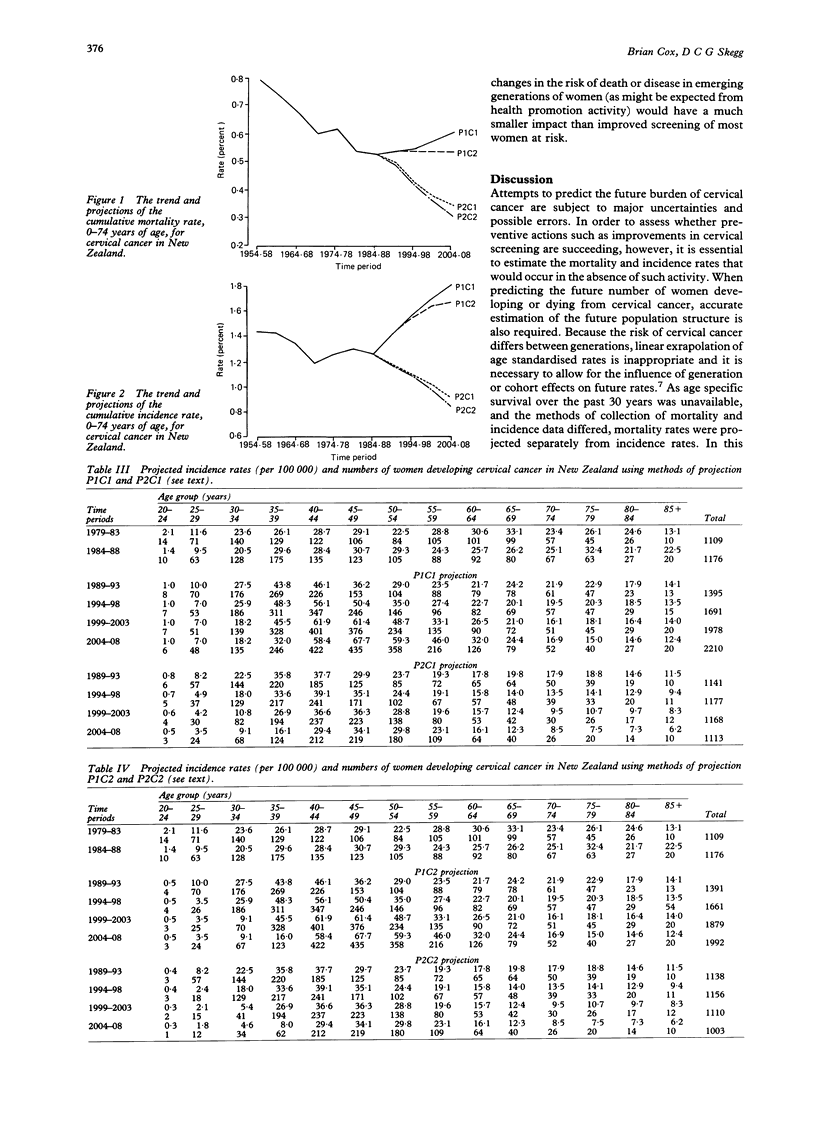
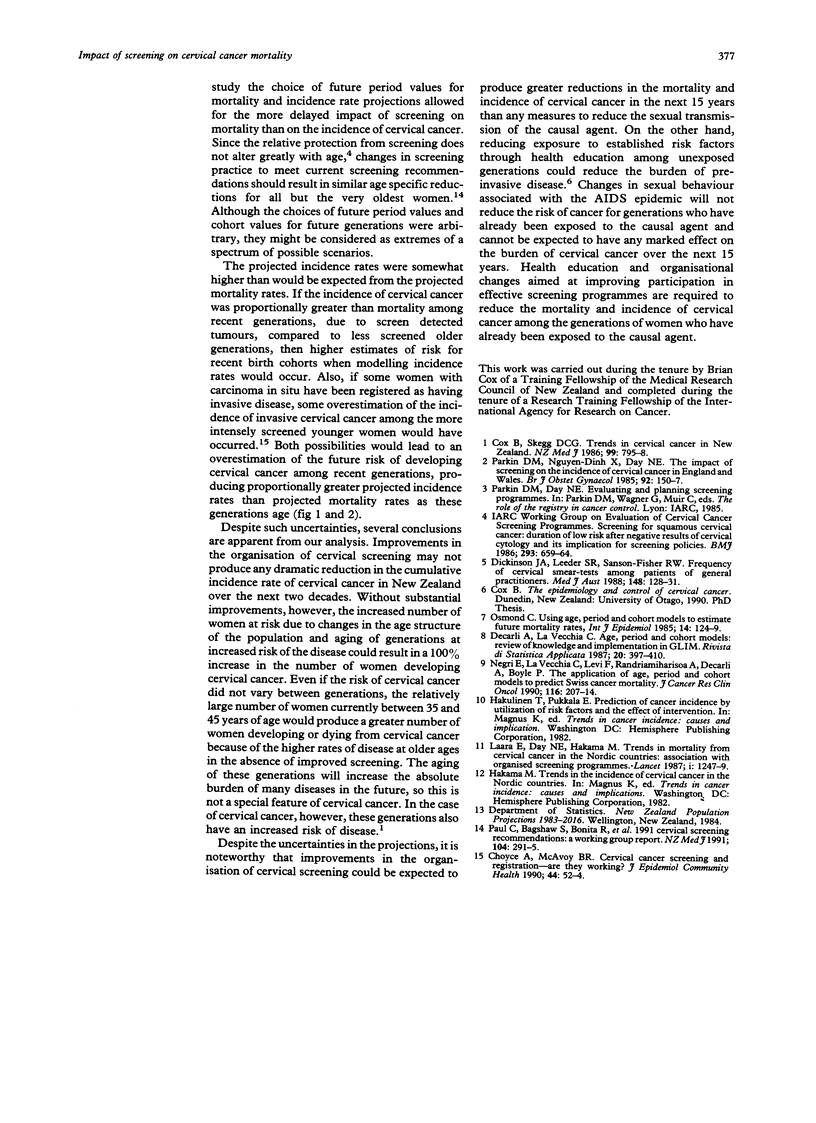
Selected References
These references are in PubMed. This may not be the complete list of references from this article.
- Choyce A., McAvoy B. R. Cervical cancer screening and registration--are they working? J Epidemiol Community Health. 1990 Mar;44(1):52–54. doi: 10.1136/jech.44.1.52. [DOI] [PMC free article] [PubMed] [Google Scholar]
- Cox B., Skegg D. C. Trends in cervical cancer in New Zealand. N Z Med J. 1986 Oct 22;99(812):795–798. [PubMed] [Google Scholar]
- Dickinson J. A., Leeder S. R., Sanson-Fisher R. W. Frequency of cervical smear-tests among patients of general practitioners. Med J Aust. 1988 Feb 1;148(3):128–131. doi: 10.5694/j.1326-5377.1988.tb112772.x. [DOI] [PubMed] [Google Scholar]
- Lără E., Day N. E., Hakama M. Trends in mortality from cervical cancer in the Nordic countries: association with organised screening programmes. Lancet. 1987 May 30;1(8544):1247–1249. doi: 10.1016/s0140-6736(87)92695-x. [DOI] [PubMed] [Google Scholar]
- Negri E., La Vecchia C., Levi F., Randriamiharisoa A., Decarli A., Boyle P. The application of age, period and cohort models to predict Swiss cancer mortality. J Cancer Res Clin Oncol. 1990;116(2):207–214. doi: 10.1007/BF01612679. [DOI] [PubMed] [Google Scholar]
- Osmond C. Using age, period and cohort models to estimate future mortality rates. Int J Epidemiol. 1985 Mar;14(1):124–129. doi: 10.1093/ije/14.1.124. [DOI] [PubMed] [Google Scholar]
- Parkin D. M., Nguyen-Dinh X., Day N. E. The impact of screening on the incidence of cervical cancer in England and Wales. Br J Obstet Gynaecol. 1985 Feb;92(2):150–157. doi: 10.1111/j.1471-0528.1985.tb01067.x. [DOI] [PubMed] [Google Scholar]
- Paul C., Bagshaw S., Bonita R., Durham G., Fitzgerald N. W., Jones R. W., Marshall B., McAvoy B. R. 1991 cervical screening recommendations: a working group report. N Z Med J. 1991 Jul 10;104(915):291–295. [PubMed] [Google Scholar]


